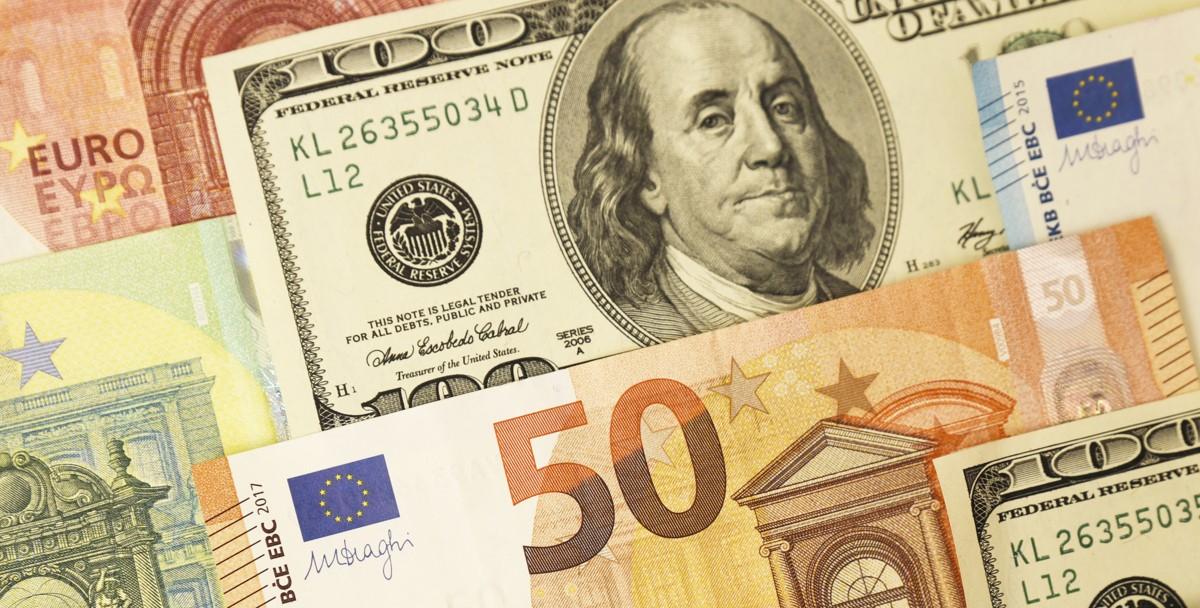
Why the Dollar Still Beats the Euro and the Yuan
As evidenced by a number of recent policy changes in China, Russia, Saudi Arabia, and Brazil, the status of the US dollar as the world’s reserve currency is under coordinated attack. Efforts to dethrone the dollar, however, will require time and luck in favor of antidollar forces. For now, however, the US dollar is the most preferred currency for foreign reserves and for settling international transactions.
The fact that the dollar is the most popular currency right now is no guarantee it will be so into the medium or long run. No currency remains the reserve currency forever, and the US dollar has only been the world’s reserve currency since the 1930s. Before then, the global reserve currency was the pound sterling. But thanks to the World Wars, the costs of a colonial empire, and an increasingly socialistic economy, the British currency was replaced by the dollar.
Understanding what turns an ordinary currency into a global reserve currency can help us understand how the dollar could go into decline and give way to competing currencies. That this will happen at some point is inevitable, and it will happen due to a combination of economics, geopolitics, and domestic political concerns.
What Makes a Good Global Reserve Currency?
We can identify some basic conditions that make it a currency desired by banks, investors, and central banks. Here are the most important ones:
The currency is used frequently in international trade.The currency has a high degree of convertibility.The domestic economy has large and open financial markets.The domestic economy is large.Domestic macroeconomic policies are generally stable and allow economic openness.
Different currencies have met these conditions over time. Sometimes, as Barry Eichengreen and Marc Flandreau have shown, these conditions can be met by more than one currency at once, leading to a period of ongoing competition among two or more currencies. This was the case before World War I, when the German mark, the French franc, and the pound sterling were all in competition. This was later replaced by a decade or more of interwar competition between sterling and the dollar.
The dollar eventually won out, but not only because the US economy became larger than the British economy. Investors and central banks switched to the dollar because the British state was nearly bankrupted by two world wars and because Britain finally abandoned the gold standard in 1931. The United States also abandoned the gold standard, of course—in 1933—but continued growth in the US economy kept the dollar in the running for global reserve currency. Macroeconomic policies were looking worse in the United Kingdom as well. The British state increasingly turned toward an economy based on subsidies, price controls, and other regulations. The US economy also became more regulated, but it remained relatively free. In 1944, the Bretton Woods agreement finally sealed the deal: the dollar had replaced sterling. Under Bretton Woods, the dollar would remain tied to gold for international transactions among sovereign states, and other currencies were only pegged to gold via the dollar.
Bretton Woods did not make the dollar the global reserve currency by decree, however. The new agreement simply “made official” what was already clear about the dollar’s new status as the dominant reserve currency. Decades of war, instability, and monetary inflation had finally done in the currencies of Western Europe. This, coupled with the US’s new status as global industrial powerhouse, set the stage for decades of dollar dominance.
How much longer will this last? It’s true that no currency will hold its position as global reserve currency forever. Yet for now, it appears the dollar continues to fare well. Indeed, when we look at the five key qualifications for reserve currencies listed above, the dollar still has the advantage. This is true even when we compare the dollar to the euro and to the Chinese yuan.
Why Hasn’t the Euro Replaced the Dollar?
The rise of the dollar did not reduce all other currencies to irrelevance. As late as 1995, the Japanese yen still made up nearly 7 percent of foreign exchange reserves. The Deutsche mark was at nearly 16 percent.
Moreover, when the euro—a new currency built largely on the strength of the Deutsche mark—was introduced in 1999, it was thought that the euro would soon compete seriously with the dollar to become the global reserve currency. Yet the euro has continued to lag, although the eurozone includes many of the world’s largest economies and has some of the most sophisticated financial centers. Even more than twenty years since the creation of the euro, the dollar is used in 51 percent of international currency transactions, and the euro is used in only 36 percent. Moreover, the euro makes up only 20 percent of all foreign exchange reserves, while the dollar makes up 58 percent.
If the choice of a reserve currency were based merely on the size of the economy and total use in international trade, one would expect the euro to be much more competitive.
In a 2009 study, however, the US Treasury suggested a reason why the US dollar continues to surpass the euro:
The key factor that may explain the smaller share of the euro as a reserve currency is the size and depth of government bond markets. Although total sovereign debt outstanding in the euro area rivals that of the United States, there is no common euro area sovereign debt market. This reduces the ease with which holders of euro-denominated securities can buy and sell them, compared with U.S. Treasury securities.
The US government bond market is huge and allows a great deal of ease in buying and selling Treasurys, which remain extremely liquid and which are considered by many to be near dollar substitutes.
Moreover, the eurozone does not present much of an alternative to the US in terms of its macroeconomic policies. Deficit spending in the eurozone is enormous, and even though the US dollar is continually subject to monetary inflation, the euro easily rivals the dollar in this respect too. Finally, sovereign debt in Europe doesn’t appear any more secure than sovereign debt in the US.
Why Hasn’t the Chinese Yuan Replaced the Dollar?
The Chinese yuan presents another example of why having a large economy on its own isn’t enough for a country’s currency to seize global reserve status. China in recent years has overtaken the US economy in terms of sheer size. Yet the yuan remains in fifth place in terms of global foreign exchange reserves. As of late 2021, the yuan still ranked fourth in terms of its share of international transactions.
Although the yuan is certainly experiencing a high growth in international trade, it still has a lot of ground to cover. Recent deals with Russia, Saudi Arabia, Iran, and an increasing number of states in the developing world will further this trend, but this will only help China meet some of the requirements for becoming a global reserve currency. The size and scope factors are moving in China’s favor, but problems of openness and convertibility remain. China still employs capital controls, meaning its economy is relatively less open than Western ones. Yes, Western states have long used a variety of quasi controls of their own, but we’re still talking about relative openness here. China has only to be relatively less open than its competitors to fail the “reserve currency test.” Moreover, Chinese government debt markets aren’t nearly as liquid or sophisticated as those of the US. The world is in many ways awash in US government bonds—bought with dollars and still considered extremely “safe”—and this is not the case with Chinese debt. Finally, macroeconomic policies in China present a high degree of potential geopolitical risk. China’s track record of not expropriating foreign capital is not well established or reliable. The long covid lockdowns of recent years in China don’t exactly instill confidence either.
The US Dollar Benefits from Other Currencies’ “Bad Behavior”
In short, the dollar continues to benefit from the fact that no matter how inflationary it becomes, or how hobbled by regulation the US economy remains, the eurozone and China—not to mention Japan and Britain—present trends that often look at least as bad.
Yet the US insists on shooting itself in the foot. In spite of the dollar’s many economic advantages as a reserve currency, the US regime continues to provide many political reasons for other regimes and economies to abandon the dollar. If the US doubles down on economic sanctions and weaponization of the dollar economy, the dollar’s liquidity and widespread usage may not save it.



